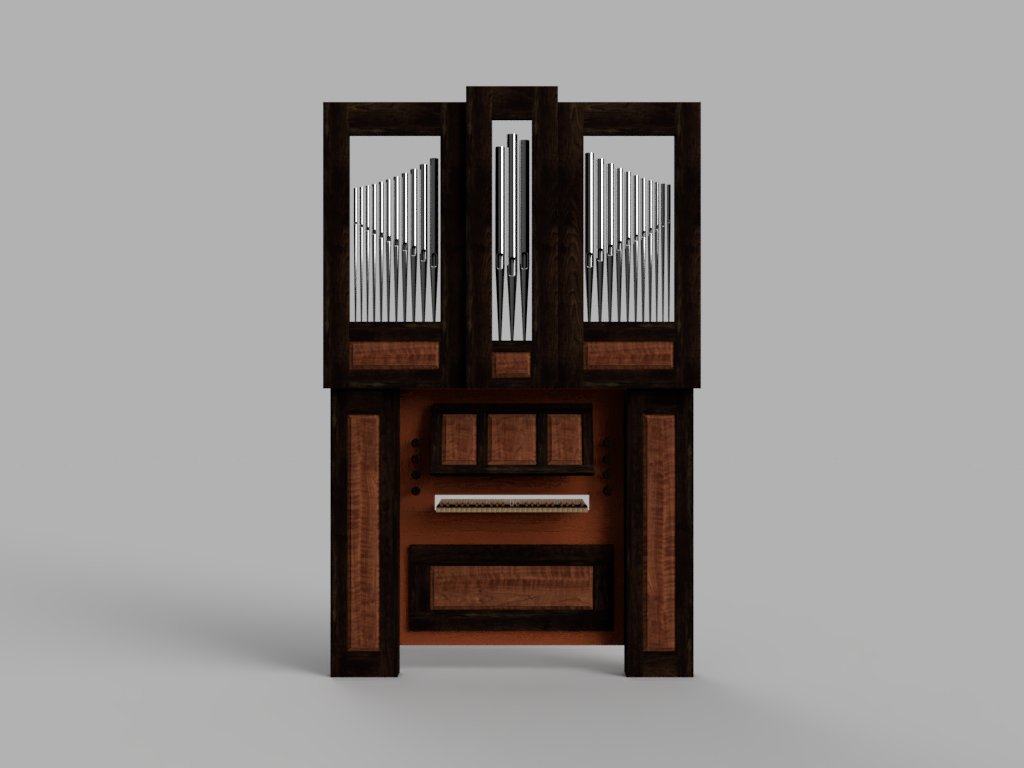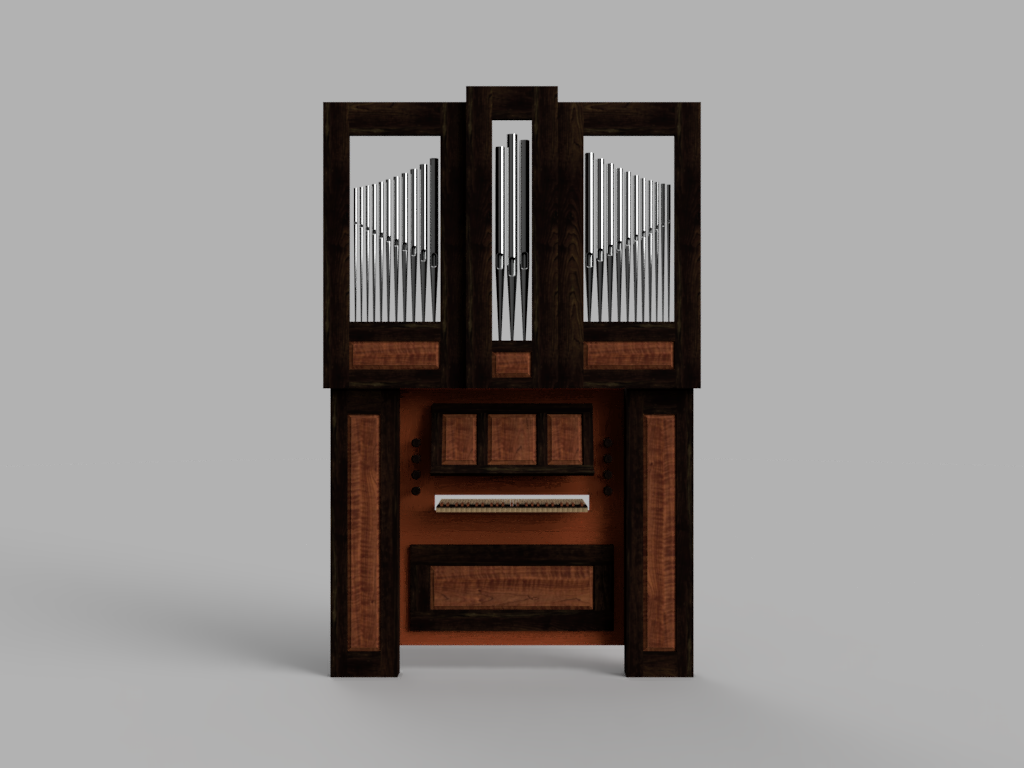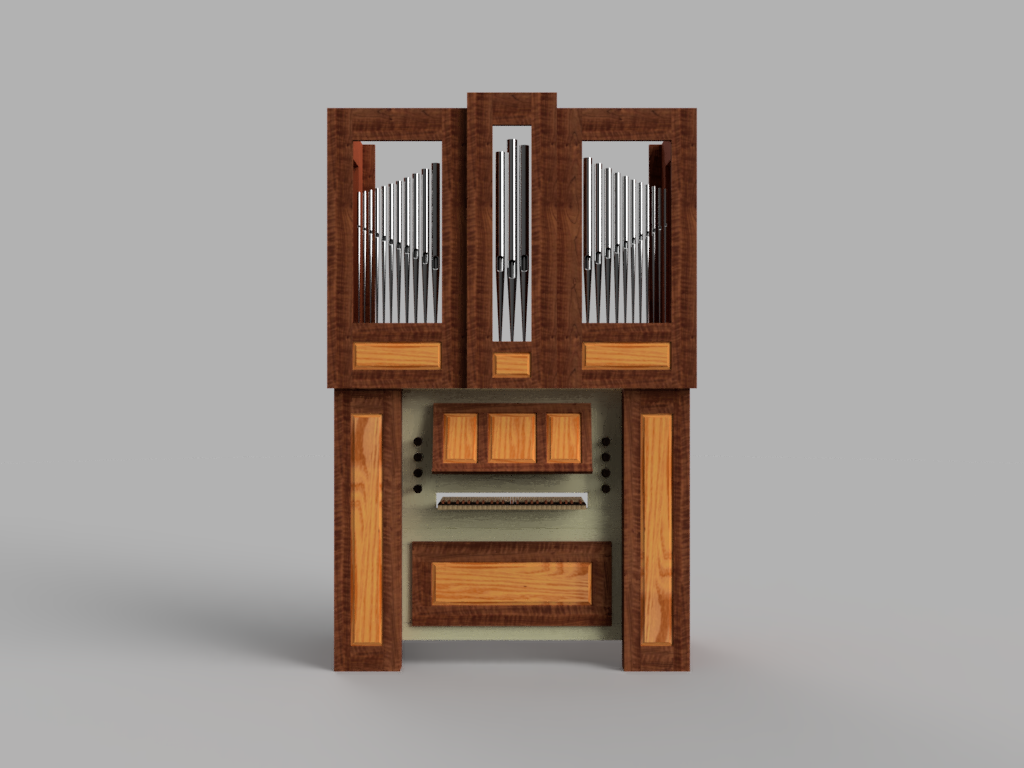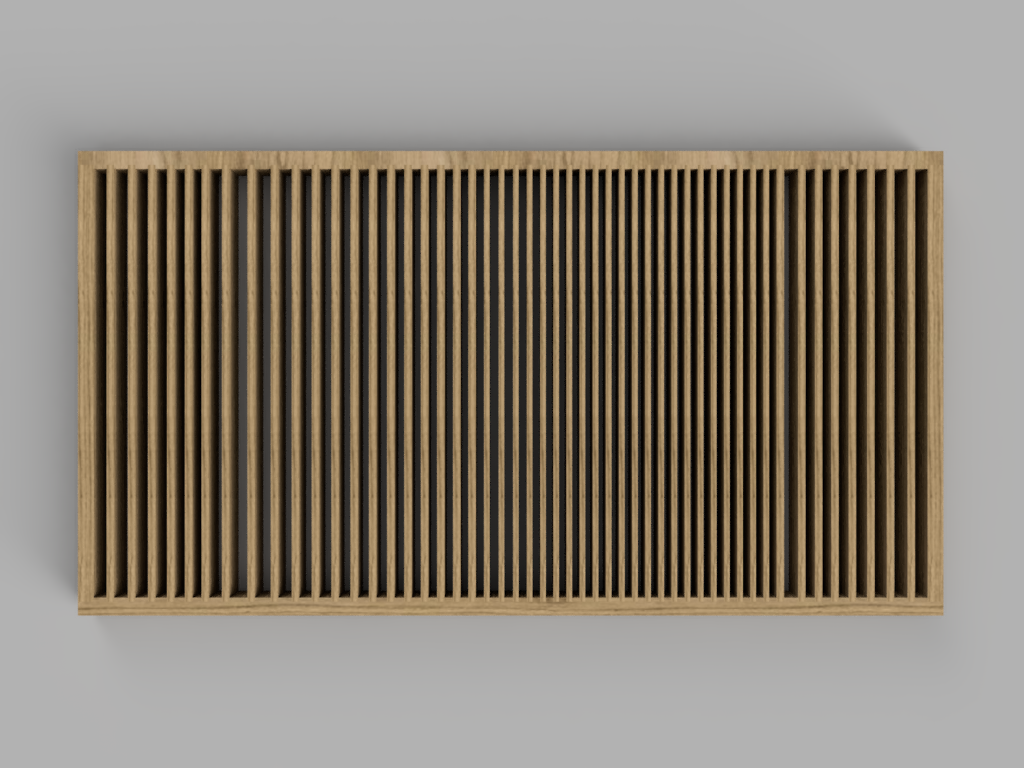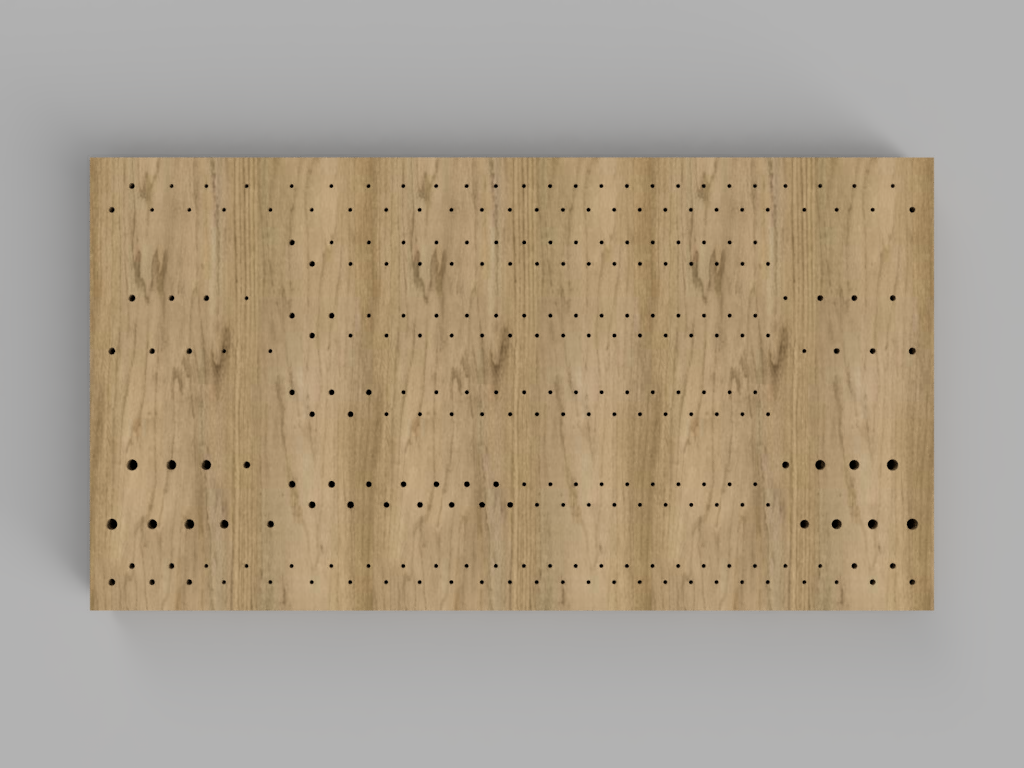Ducroquet |
by Steve Panizza
Last August, as part of a team, I was asked to help remove the 1852 Ducroquet, an instrument that meant a lot to me, at House of Hope Presbyterian Church on Summit Avenue here in Saint Paul. Unfortunately, the church could no longer site the organ. You can find photos of our adventure here.
Last summer, I produced a brochure to present to potential clients who I felt might sponsor the construction and placement of a cabinet organ whose design took me most of the pandemic lock-down to refine. The cabinet organ project was still fresh in my mind when dismantling the Ducroquet. For me, our process of dismantling became a design study in the emerging French Industrial-Romantic era of pipe organ building.
Regarding my project of late, I redesigned the windchest and rewrote the stop specification. It became clear that if some design aspects of the Ducroquet organ were applied to my cabinet organ, they would increase its European cultural authenticity, a design goal I laid earlier for this project.
I reconfigured the windchest grid based on the Ducroquet. Tone channels now alternate between the C and C# sides of the organ until tonal-f, where channels then progress chromatically. This configuration has advantages. The pipes tune within easy reach from the back of the organ case, rollers that horizontally distribute the bass note key actions create space on either side of the windchest for stop action and wind trunk placement. Design authenticity sees remarkable improvement.
The stop nomenclature is an additional nod to the French influence of Ducroquet. I find that not every organist understands the divided stop-shared bass concept. So to ease misunderstanding, I preface each stop name with "Basse de" or "Dessus de" where appropriate.
Basse de Bourdon 8' (notes 1 - 17, stopped wood)
Dessus de Flûte ouverte 8' (notes 18 - 51, open wood)
Dessus de Viole 8' (notes 18 - 51)
Basse de Flûte 4' (notes 1 - 17)
Dessus de Prestant 4' (notes 18 - 51)
Dessus de Flûte 4' (notes 18 - 51, potentially triangular)
Doublette 2' (notes 1 - 51)
Larigot 1 1/3' (notes 1 - 51)
A few years out of college, I traveled to Saint Paul to visit the organs at House of Hope Church, especially the large Fisk tracker that occupies the rear balcony. Of course, the 1878 Merklin upfront is well known too.
I found myself captivated, though, by the Ducroquet located in the Assembly Room, a one-manual tracker action Romantic-era French pipe organ, an intimate-sounding transition instrument built with beautiful reeds and well-voiced flues.
House of Hope Presbyterian Church acquired the Ducroquet from Jean Louis Loriault, who had removed it from a parish church in Aubusson, France. A history of the organ states that it appeared at the Paris Exposition of 1855.
C.B. Fisk, Inc. of Gloucester, Massachusetts, restored the instrument before its installation at House of Hope Church.
